In this interview, we explore the inspiring journey of Michelle Balbi, the driving force behind Meesha Aesthetics, a company renowned for itspersona ...
How a Retail Pro Turned Skin Sensitivity Into a Skincare Brand
Written by: Carolyn Young
Carolyn Young is a business writer who focuses on entrepreneurial concepts and the business formation. She has over 25 years of experience in business roles, and has authored several entrepreneurship textbooks.
Published on April 3, 2025
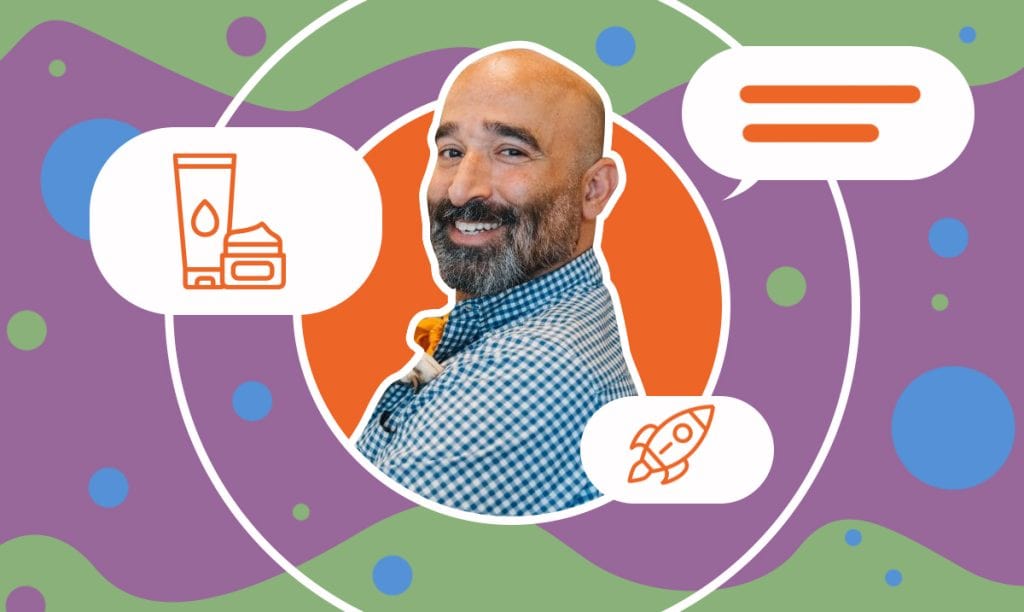
Jonathan Plotzker-Kelly, founder of Heliotrope San Francisco, has spent over a decade crafting high-quality, all-natural skincare products rooted in simplicity, sustainability, and personal wellness. With a background in product development and a passion for natural ingredients, he’s built a brand known for small-batch, fragrance-free formulas that can be customized to each customer. In this interview, Jonathan shares the journey behind Heliotrope, the values driving the business, and insights for fellow entrepreneurs in the natural skincare space.
SBS – What inspired you to start Heliotrope San Francisco, and how did your background influence the company’s direction?
Jonathan – I started working in retail operations right out of school, moving from NYC to SF sight unseen. I got a job right away as an assistant buyer at Pottery Barn, which at that point had just been purchased by Williams-Sonoma, and stayed there, holding various positions, for almost a decade. After learning all about skincare at Bare Escentuals (now known as Bare Minerals), I ran operations for Restoration Hardware’s new catalog division and helped create their first website. Then, I was the head of merchandising at Good Vibrations, a very reputable, well-known “sex-positive” adult products company in SF.
All that being said, I knew all about retail and decided to try going out on my own — knowing that there were plenty of friends and ex-coworkers with whom I could collaborate and who would help me in the creation of the new brand.
SBS – How do you ensure the quality and consistency of your products while maintaining small-batch production?
Jonathan – I work with a number of very reputable chemists who know what they’re doing. I’m not a chemist — nor am I an engineer — so I was never going to be the one to build a formula from scratch or do large-scale production in my own facility. Instead, I work with the experts — I tell them what I want a new formula to do or how I’d like to make tweaks on an existing formula — and they have the expertise to do it.
My husband & I are Heliotrope’s biggest customers. The sinks & medicine chests in our home are filled to capacity with Heliotrope products, both existing ones that we regularly use, as well as new formulas we’re testing (yes, we only test on humans). So, if something isn’t right, I’ll know it.

SBS – Can you discuss the challenges and benefits of sourcing organic and natural ingredients for your products?
Jonathan – We produce everything locally, which means the Bay Area of Northern California. However, many of the raw materials are sourced throughout the world, from victims of the fluctuations of international markets, climate crises, and war. Trivia question: Where does (did) 2/3 of the world’s sunflower oil come from? Ukraine.
The benefits: Well, it goes without saying that a naturally derived ingredient is better for humans than lab-made “miracle chemicals.” For me, someone with contact dermatitis who reacts to synthetic perfumes, I have to use pure essential oils. For those who like consistency, that could be a problem — this year’s lavender might smell differently than last year’s, or perhaps the oil is a different hue this time around — but I find that part of the charm. It also means that those products that have scent are not overpowering.
“Organic” opens up a whole other can of worms. Yes, in many cases, the organic option is healthier, but sometimes it really doesn’t matter. Or, in the case of shea butter (karite) from West Africa, there’s no such thing as an organic certification on the family-run farms, and therefore, excluding non-organic ingredients would severely limit our ability to make the products we want to make.
SBS – What strategies have you employed to differentiate Heliotrope in the competitive natural skincare market?
Jonathan – This continues to be the most difficult part of owning a small business. We’ve been somewhat successful with our social marketing — creating content in-house (including reels starring my 12yo daughter). We blog as often as we can, often reworking old blogs to bring them up-to-date, because some of the most popular pages on our website are older blog posts!
Paid advertising is hit-or-miss. Just when you think you’re making headway, an ad might stop working. So you’re constantly creating more content.
As the “face” of the brand, I try to be authentic & speak about what I feel strongly about: natural ingredients, no synthetic perfumes, buying in bulk, and/or coming back with empties to do refills, etc. When I do in-person pop-ups, they not only help get the word out, but people get to meet the real guy behind the products (and see how well I’m aging — I have pretty great skin for a 60yo, in all modesty).
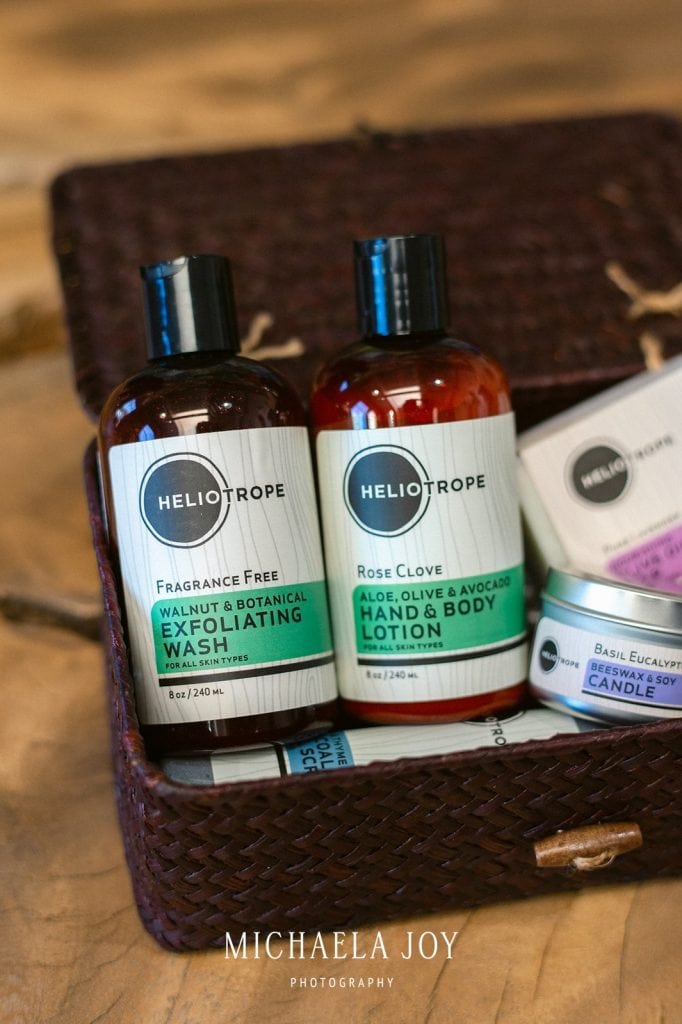
SBS – How do you approach product development, and what factors influence the introduction of new items to your line?
Jonathan – Product development is honestly the most fun I have, but I’ve gone a little overboard in the last few years, and we’ve had to scale back the number of SKU’s we produce. I was afraid we were starting to confuse new customers with too many options, so I limited it to either requests from customers (shampoo bar! Vitamin C serum!) or adding more scent/EO options to existing products.
SBS – Can you share insights into your decision to offer customizable fragrance options using essential oils?
Jonathan – It started with my desire to create fragrance-free products. I knew that there would be customers who would want scent, so we decided to make it easy to customize. When we had a store, customers could walk up to the “aromatherapy bar” & choose an EO, which we’d add to the product on demand.
There are a couple of reasons I love this :
1. Most of the “gendered” skincare out there depends on scent to convince people whether that lotion is for men or women. That’s crazy. Anyone can enjoy any scent.
2. We’re empowering our customers to choose how they smell without us telling them, “Here are your only options.”
3. We actually save on packaging/labels since we don’t have to do a minimum run of a label for each scent. We just use the same label & put a little sticker on with the EO name. There’s less waste and more flexibility.
SBS – How has your commitment to sustainability impacted your business operations and customer relationships?
Jonathan – We try to use the same packaging for as many products as we can so we can share bottles for multiple products. Selling in bulk goes a long way towards this goal, too — fewer packages, less handling — and customers save money.
What I hate is when we discontinue a product and end up with extra labels. There’s really not a lot we can do with these, so we hold onto them and hope we can find another use — like maybe shredding them & using them as packing material.

SBS – How do you balance online sales with maintaining a physical presence in locations like Oakland?
Jonathan – I still miss having a “real” brick and mortar store. We recently closed our sole San Francisco retail location when the lease was up. Note: My quality of life is SO much better not dealing with the headaches! However, the personal conversations and give-and-take with clients were meaningful. We have a small “retail-like” set-up in our studio in Oakland, but it’s not the same. We don’t have a storefront, and clients have to make appointments.
That being said, we have great online customer service, if I say so myself, and give clients many ways to get hold of us. We also give as much information to website visitors as we can to reduce the number of questions people might have.
SBS – Can you share an example of a significant obstacle you encountered and how you overcame it?
Jonathan – Really, the biggest obstacle is always cash. Running the business on credit takes its toll. A number of the chemists I work with are on a cash basis, and when a big production run is done, it’s a big outlay of cash. During the shutdown a few years ago, we were able to secure SBA loans to get us through, but it continues to be an issue, just like with every other small business.
I often have to infuse personal funds into the company for short-term needs or use credit cards when absolutely necessary. Along the way, we’ve had other infusions of cash (a grant for local small business owners, micro-financing organizations giving us no-interest or very low interest loans, etc).
SBS – What advice would you give entrepreneurs looking to enter the natural skincare industry?
Jonathan – Make a great product, and believe in what you’re doing. Work with smart people (you can’t do it all yourself), and don’t hesitate to outsource when necessary. Use your network to get started & to make things happen. I couldn’t have started Heliotrope without the help of others who helped with design, product testing, website development, etc.
Be willing to put yourself on the line for what you believe in. Having credit cards with lots of available credit is also a good thing.
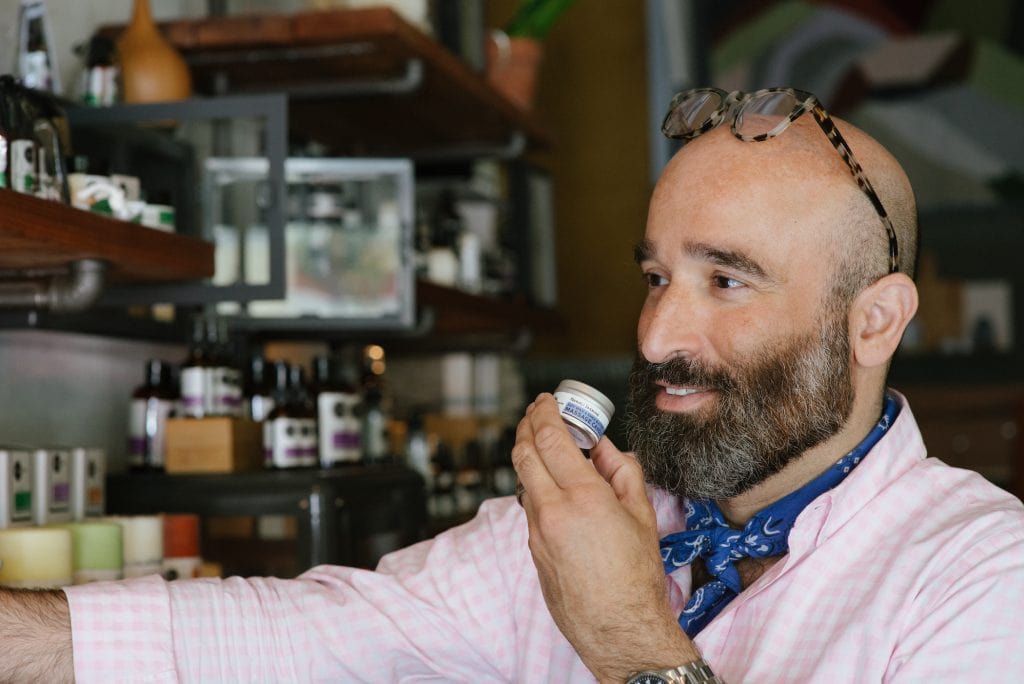
SBS – How do you approach collaborations or partnerships to expand your brand’s reach?
Jonathan – I love collaborations! We’ve private labeled our products for a number of other organizations (a local museum, a small gift shop) where the label is co-branded. It’s a win-win for all.
More recently, I worked with a friend who’s a ceramic artist to create a vessel for our soy candles, which is not just a work of art but can also be reused at home. I also worked with a local baker (we live on the same street in East Oakland) to create products that smell like her kitchen (cardamom bun anyone?) AND we get coffee grounds from two young women who are roasters for our exfoliating soap. We put their logos on our labels, they sell our products to their customers, and both brands get seen by the others’ clients & everyone sells more.
SBS – Can you discuss the importance of community engagement to Heliotrope and how you participate in local initiatives?
Jonathan – It’s important to be a good citizen and a good neighbor. We donate to a lot of non-profit organizations with products as giveaways, for raffles, door prizes, etc. It helps them out and puts our brand in front of their donors. I wish we could do more (cash donations are pretty difficult with our limited budget).
SBS – How has technology influenced your business operations and customer interactions?
Jonathan – It’s hard to answer this in a meaningful way. I think we benefit from advances that every other business on the planet benefits from. We use mobile credit card processing to facilitate in-person transactions anywhere we go (pop-ups, etc), we communicate via our website & all the various tools it provides (chat, emailing, reviews), and we send emails & texts to our clients for marketing purposes, etc.
In a limited sense, we’ve done some hybrid automation in our production — acquiring filling machines & labeling machines — but we haven’t grown to the size yet where we need large-scale machinery (or robots).
It’s all still pretty hands-on, which has the upside of keeping me in touch with all the processes.
Subscribe to Our Newsletter
and gain insider access to cutting-edge business insights and trends.
Featured Resources

Michelle Balbi Pioneers Personalized Skincare in the Botox Industry
Published on January 8, 2024
Read Now
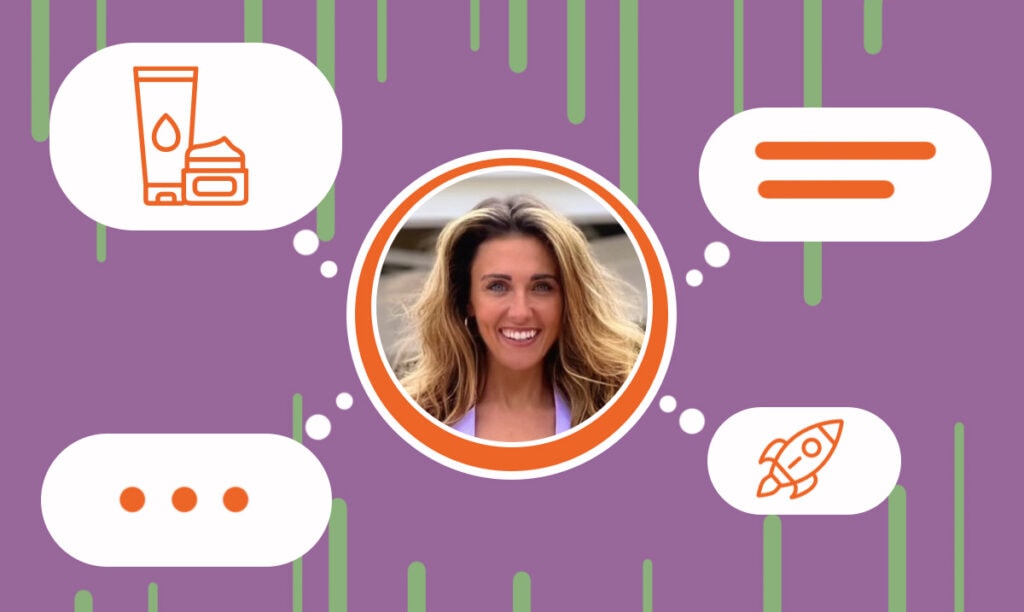
LOUMI Skincare’s Journey to Sustainable Beauty with Megan Murphy
Published on January 4, 2024
In this interview, we delve into the world of ethical and sustainable skincare with Megan Murphy, the CEO and owner of Loumi Skincare. Megan sharesh ...
Read Now

EYURS Journey in Korean Skincare — Interview with Annie Yu
Published on December 15, 2023
EYURS stands as a testament to the evolving landscape of the Korean beauty and skincare industry, where innovation and quality converge. Co-foundedb ...
Read Now
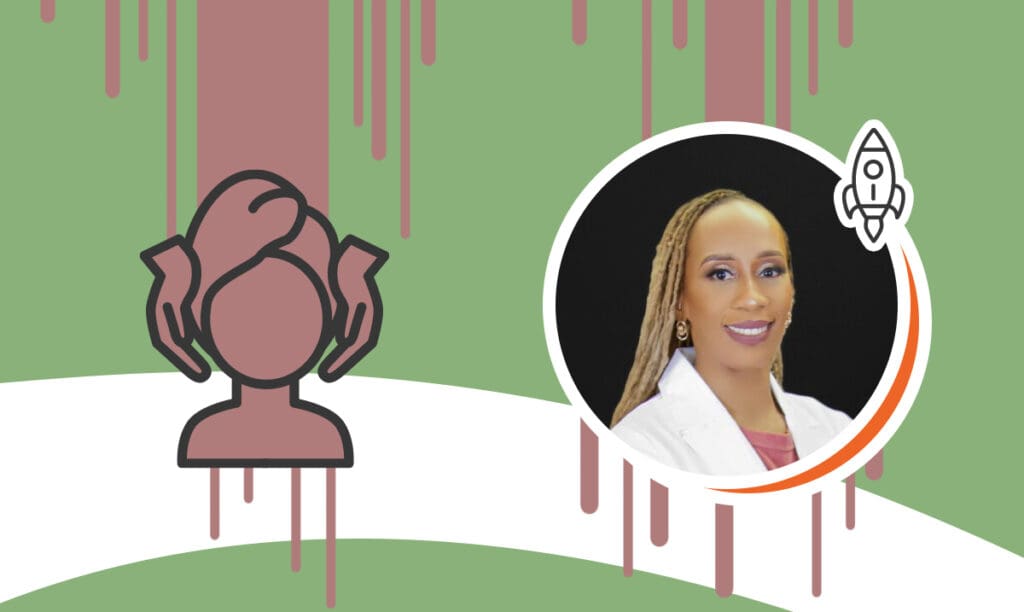
Mastering Beauty: Inside Andrea Collins’ Skincare World
Published on December 8, 2023
Meet Andrea Michelle Collins, the heart and soul behind Royal Esthetics, a sanctuary where skincare transcends mere beauty treatments to become ahol ...
Read Now

18 Cosmetic & Beauty Business Ideas
Published on July 28, 2022
The beauty industry is huge, and still growing. The US is one of the largest markets, and there’s always room for appealing and innovativeprod ...
Read Now
Comments